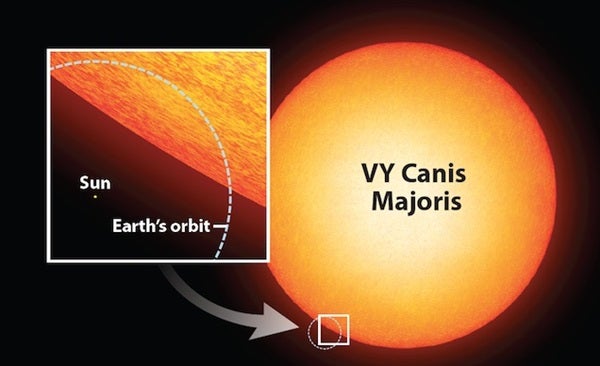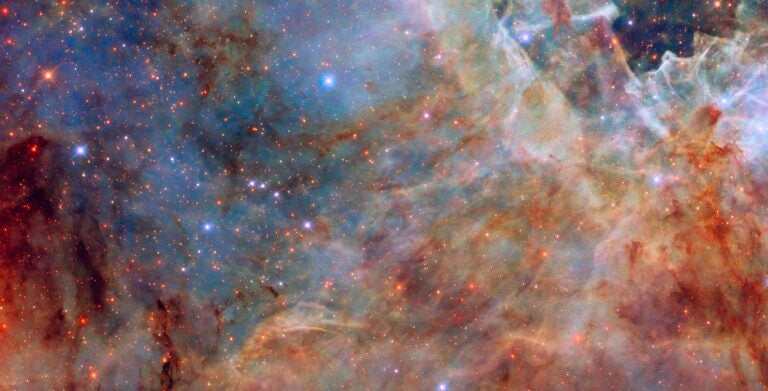Although stars do not have surfaces, the most common definition for the outer boundary of a star is the photosphere, or the location where light leaves the star. The biggest stars are red supergiants, and the biggest has a radius that is approximately 1,800 times the radius of the Sun (432,300 miles [695,700 km]). The reason for this maximum observed size not well understood.
One might guess that a more massive star would grow to be bigger in its red supergiant phase, but more massive stars do not evolve through a red supergiant phase, and they consequently do not grow as large. Perhaps one could imagine a star with arbitrarily large mass and thus arbitrarily large size, but no stars have been found with masses beyond approximately 200 to 300 solar masses — even at that mass, they are smaller than the biggest red supergiants. One of the largest known stars is the red supergiant VY Canis Majoris, which would envelop Jupiter if it were placed at the Sun’s location.
Director of Center for Detectors and Professor of Imaging Science,
Rochester Institute of Technology,
Rochester, New York










